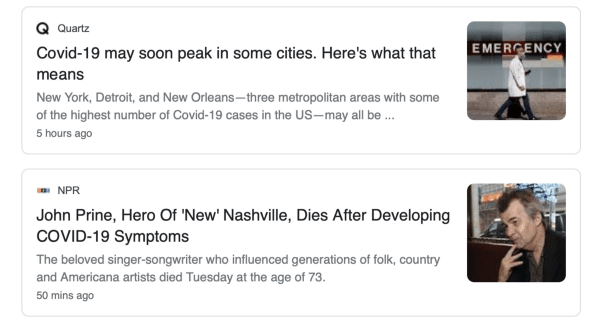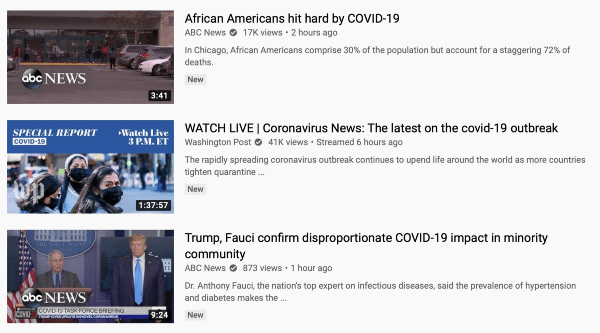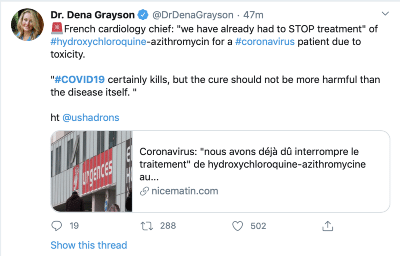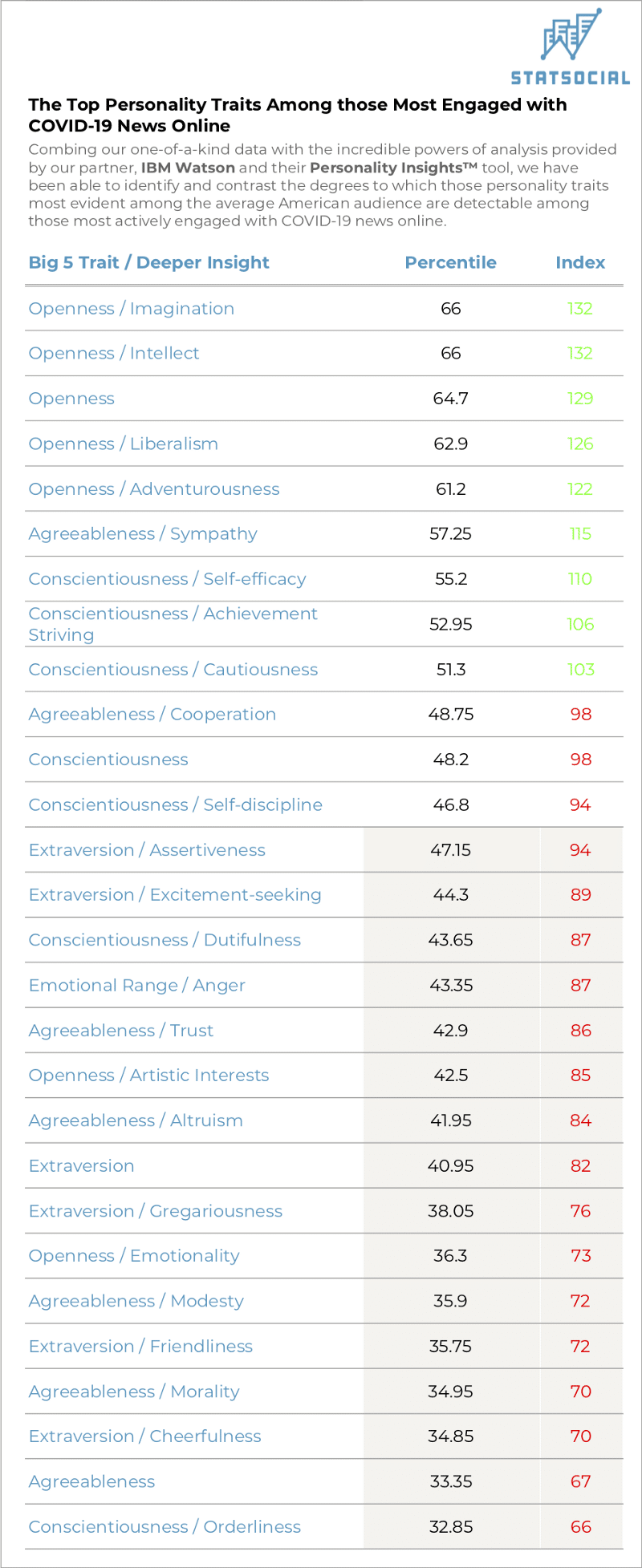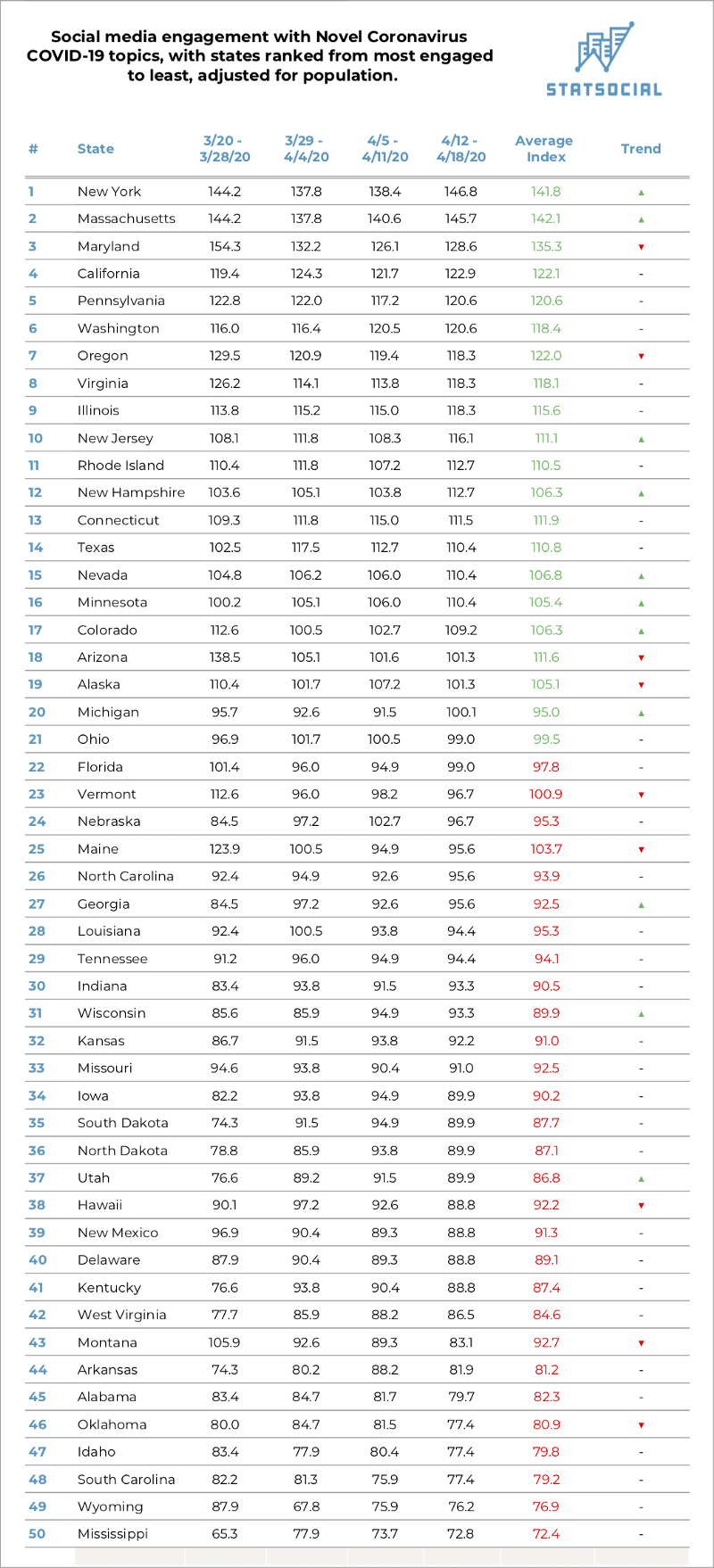
Week 4 — Which states are most engaged with online COVID-19 news? And who is trending up/down?
Below you’ll find the weekly update, courtesy of StatSocial’s Crisis Insights service, tracking and ranking each state based on engagement with online discussions of COVID-19.
For those new to Crisis Insights: The subscription service has been built using StatSocial’s Silhouette™ social data platform. The service is a tool for brands, marketers, and agencies seeking to understand the rapidly changing dynamics of their customers who, as a result of the uncertainty born of the COVID-19 pandemic, are finding their customer dynamics shifting during these trying times.
The 50 United States, ranked by online engagement with Novel Coronavirus / COVID-19 topics, from most engaged to least

Explanation of the above data: The scores on the above chart are index scores. Used for convenience here, these scores summarize, at-a-glance, the degrees to which social media content related to novel coronavirus / COVID-19 topics have been engaged with by the residents of each state.
The index scores are calculated based on contrasting the above described statistics with the entire United States population’s engagement with novel coronavirus / COVID-19 topics. A level score of 100 is used to represent this national number, and the scores on the above graphic report the degrees to which each state’s engagement is in excess of or is equal to (represented in green), or falls short of (represented in red) that baseline.
Each state’s engagement has been broken out by week (the first three to have transpired since Crisis Insights’ launch). This allows you to see how engagement has increased, decreased, or held steady week-to-week.
The data used for Crisis Insights’ reporting is collected and analyzed daily, and then reported to subscribers as rolling seven and 30-day averages (as well as a full data series).
In addition to the insights shared here — regarding where each state’s residents stand when it comes to engagement with topics surrounding the COVID-19 matter — this also offers a small glimpse into how our constantly revised, amended, and well-presented reporting allows brands to observe, compare, and retain context for customer behaviors, concerns, affinities, etc., as they shift, change, and are even replaced over the coming weeks and months.
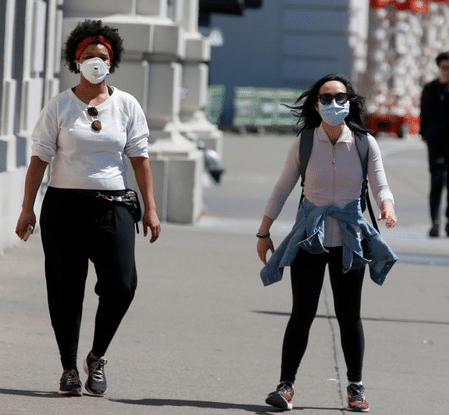
The top ranked state this week is the state StatSocial calls home, and the one hardest hit by the virus (both in terms of diagnosed cases and fatalities). For residents of New York, and especially New York City, there is a very real need to keep up to date on the day-to-day developments around the virus, and the sharp economic downturn that came along with its arrival. This news is of importance to everyone right now, of course, but there is an additional practical urgency for New York’s residents.
This is why its not at all surprising to see that, while topping the list, consumption of discussion and content related to the Novel Coronavirus crisis is only trending upward among the state’s citizens.
As of this week, the degree of engagement among the Empire State’s residents exceeds the national average by 1.418 times. The week of 4/12 to 4/18/20 has seen found the state consuming, interacting, and/or engaging with COVID-19 related content to the greatest degree to date.
Massachusetts (the top ranked state last week) is ranked second here. The state’s citizens have been engaging with online content pertaining to the virus, and all related matters, to a degree exceeding the baseline by 1.412 times.
The week of 4/12 to 4/18/20 was the state’s highest week of engagement to date, and in an overall way the state’s engagement is trending upward.
Maryland — the state with the 13th most diagnosed cases, 7th most confirmed deaths — is ranked 3rd here, but engagement has been steadily trending downward.
Michigan experienced the third largest number of new fatalities last week (after New York and New Jersey), and has also contended with the third largest number overall. Engagement among the state’s residents is trending upward,
Utah, the state with the 30th most diagnosed cases (and 29th most new cases as of the past week), and 44th highest number of confirmed deaths from the virus, finds its engagement overall trending upward. The state’s week of highest engagement to date was the week of 4/5 to 4/11/20.
Mississippi, retains its position as the state with the lowest degree of engagement from last week. Averaging the engagement trends of the last three weeks indicated on the above chart shows that engagement has been trending downward, with the week of 4/12 to 4/18/20 showing an especially sharp increase.
Wisconsin, which is ranked 31st above, finds engagement among its residents decidedly trending upward. To date, the state has the 26th largest number of overall diagnosed cases and the 19th largest number of confirmed fatalities.
We eagerly invite you to visit our Crisis Insights page here, and to reach out to us to learn a great deal more about the service, and to check out a demo.
As before, and as always, we sincerely hope that all reading are doing as well as circumstances allow, and are safe.
What are Crisis Insights?
Crisis Insights provides subscribers with near real-time updates on how the unprecedented climate in which we all find ourselves is affecting consumer sentiment, both among the general public, as well as a brand’s specific customers.
Changes in consumer sentiment are tracked in this reporting, for 32 crisis-related segments, across four general categories:
- People concerned about the Covid-19 epidemic
- People concerned about the direction of the economy
- People coping and adjusting to the ‘new normal’ environment
- General attitudes and psychographic outlook of the population
With that we encourage you to continue to revisit the blog for more insights of this nature, including our weekly updates of this chart.
And most importantly, we hope that you and yours are remaining as safe and healthy as your situations allow. Please be well.
We encourage you to visit these previously shared Crisis Insights related posts:
Last week’s update of the above chart:
A look at the personalities of those most actively engaged with COVID-19 content online:
An examination of the preferred TV genres of those most active in the online COVID-19 discussion:
A look at some top-line demographic and geographic data regarding those most actively engaged in the online, COVID-19 discussion:
The entry wherein we announced and introduced Crisis Insights:

